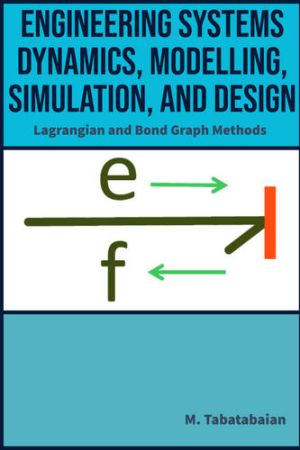HMD Fusion Review: A Fun, Modular Phone for the Masses
HMD’s Fusion builds on the idea of a modular phone explored by Motorola about eight years ago. The new brand, however, challenged the norm by developing a modular platform for budget smartphones. There are two smart accessories to choose from as well, making for an interesting take on the typical budget smartphone.

Since its shift from Nokia to HMD, Human Mobile Devices has been launching some interesting smartphones and feature phones. These phones focus on quality and practicality instead of raw power and performance. With the HMD Fusion, HMD focuses on reliability and self-repairability (all of their smartphones are repairable) but also adds a modular twist, making it a fun and exciting device to play with. It's priced at Rs. 17,999 in India, which puts it up against some very competitive budget smartphones from Chinese brands.
HMD Fusion Design
The phone is mainly about design—in fact, I could confidently call it a design exercise. And that's really weird because, for a phone focused on design, it's only available in one finish: black.
But worry not! Here's where the phone's modular ideas come to the rescue.

Meet HMD's modular Outfits
There are two types of snap-on cases branded as Outfits. The Casual Outfit comes in the box and is a soft TPU case that can be attached to the phone. While it provides better durability from drops, it also makes the phone thicker. Sadly, HMD only sells basic black Outfits in India.

The Flashy Outfit offers a flash that functions like a ring light
Then there are the Smart Outfits, and HMD has launched two of these—the Flashy Outfit and the Gaming Outfit in India. Despite its appearance, the Flashy Outfit (priced at Rs. 2,999) hides a unique feature. The blue-coloured case has a raised silver ring that protrudes around the phone's camera module. There's a hinge at the top, and you can pull out the bottom edge of the ring and turn it into a dedicated flash unit or ring light when vlogging and light up your subject or yourself. The LED can also be opened halfway, doubling as a flip-out stand to hold the phone up when watching videos. The plastic case is also quite rugged and provides good all-round protection, reminding me of the older Nokia XR20.
The second, Gaming Outfit (priced at Rs. 2,999), does not need any explanation. It functions as a game controller, giving mobile gamers physical buttons and keeping their fingers off the display.

The Gaming Outfit in action
The Smart Outfits connect via 6 contact pins at the bottom of the case, letting users control features related to the Outfit via the phone. An icon depicting a bulb shows up in the camera app's viewfinder when you mount the Flashy Outfit. It lets you turn on and adjust the brightness of the LED ring and also lets you change or customise its tone by any degree.
Contacts on the Gaming Outfit are used to connect the controller to the phone. Once connected, the controller works well without any issues. This also reduces any lag usually found on Bluetooth controllers. I tried out RipTide GP 2, and it worked as expected with no problems. You will need to remove the phone from its default Casual Outfit case before attaching it to any other accessory.
In practice, both Outfits were practical and worked as expected. You will need to attach the phone perfectly in place for the Gaming Outfit to detect it. HMD also encourages its users to design their custom Outfits (using the paid HMD Fusion Developmental Toolkit) for the Fusion using 3D printing.

The Gaming Outfit has its battery and a Type-C connector
Like most HMD smartphones, Fusion is also focused on self-repair. All you have to do is peel off the TPU case to get access to the screws and the battery. There's no need for a plastic prying tool either (HMD calls it Gen 2 repairability), as you can use the phone without the Casual Outfit.
Modular bits aside, I like the phone's barebones design and its translucent rear panel. It's quite slim, and the screws around the back lend it a very industrial look. Its basic IP54 rating (dust and water) meets all the requirements for a budget 5G smartphone.
HMD Fusion Specifications
The HMD Fusion packs a Qualcomm Snapdragon 4 Gen 2 SoC, which is manufactured using the 4nm fabrication process, which should make it good enough for most budget smartphone-related processing requirements. There's also 8GB of RAM and 256GB of storage, which can be expanded using a shared slot for a microSD card. The phone only offers two SIM card slots, which can accept two nano SIM cards or a SIM card + SD card combination. The Qualcomm chipset provides robust connectivity, supporting several 5G bands, Bluetooth 5.1, Wi-Fi 6, USB Type-C (2.0), and standard global positioning systems. The phone is powered by a 5,000mAh battery.
HMD Fusion Performance
There's a 6.5-inch HD+ IPS LCD panel with a 90Hz refresh rate that does not sound like much, even for a budget smartphone. It gets you the basics and is bright enough to be used outdoors but cannot tackle direct sunlight, which becomes a bit of a problem when using the camera app. It's not as sharp either, so text and images do appear a bit soft. Despite forcing its peak refresh rate, it's just not able to deliver with noticeable ghosting when scrolling.

All Smart Outfits have a 6-pin connector at the bottom
We ran our usual benchmark tests, and the results (as expected) weren't great. With daily usage, the phone runs apps just fine, but you will notice slowdowns and stuttering when attempting to multitask. Games work just fine, but at low to medium settings.
| Benchmarks | HMD Fusion | Motorola G85 5G | iQoo Z9 5G | Realme 13+ 5G |
|---|---|---|---|---|
| Chipset | Snapdragon 4 Gen 2 | Snapdragon 6s Gen 3 (6m) | MediaTek Dimensity 7200 (4nm) | MediaTek Dimensity 7300 (4nm) |
| Display resolution | HD+ | FHD+ | FHD+ | FHD+ |
| AnTuTu v10 | 4,48,378 | 4,50,865 | 6,87,545 | 6,85,134 |
| PCMark Work 3.0 | 8,503 | 11,757 | 13,319 | 12,377 |
| Geekbench 6 Single | 937 | 935 | 1,151 | 1,044 |
| Geekbench 6 Multi | 2,245 | 2,102 | 2,669 | 2,945 |
| GFXB T-rex | 70 | 89 | 108 | 61 |
| GFXB Manhattan 3.1 | 37 | 33 | 60 | 50 |
| GFXB Car Chase | 17 | 19 | 33 | 29 |
| 3DM Slingshot Extreme OpenGL | 1,775 | 3,259 | 5,766 | 5,174 |
| 3DM Slingshot | 2,712 | 4,406 | 6,654 | 6,672 |
| 3DM Wild Life | 673 | 1,569 | 4,126 | 3,161 |
| 3DM Wild Life Unlimited | 669 | 1,578 | 4,205 | 3,155 |
Despite its appearance, the Android 14 software is packed with numerous third-party apps. These include games, calling apps, VPN apps and more. The good bit is that all of these can be uninstalled, which can bring it back to its near-stock state. However, even without all of these apps, the software does not feel as responsive as it should be given the underlying hardware.
The phone has just two cameras. The 108-megapixel primary camera produces oversharpened 12-megapixel binned images in daylight while managing decent low-light images, provided you use the dedicated Night mode. The details are on the lower side, but the dynamic range is good. The selfie camera shoots passable 12-megapixel images despite using the Flashy Outfit, but that doesn't offer much detail.
HMD Fusion primary camera samples (tap to expand images)
HMD Fusion selfie camera sample with Flashy Outfit light (tap to expand image)
Despite the power-efficient processor, the HMD Fusion somehow isn't big enough for battery life. I ran our usual video loop test and managed just 16 hours and 13 minutes, which is well below the mark for a budget smartphone. Surprisingly, the 33W charger in the box performed decently, managing a full charge in 1 hour and 44 minutes.
HMD Fusion Verdict
In a sea of regular bar-shaped smartphones. HMD's Fusion stands out for two reasons. It is not only modular but can also give its users easy access to its internals for tinkering and repair. After using the HMD Fusion, it's not too hard to conclude that it follows the typical HMD philosophy of delivering the basics.
The phone is a proper design exercise and, for the first time, brings the goodness of modular smartphones into a budget package. The last time I experienced something similar was on Motorola's Z series, which spanned the mid-range to the premium segment. Nothing's CMF Phone 1 (Review) also retails at this price point and takes a modular approach to a smartphone, but all of its beautifully designed accessories are functional, not smart.
Of course, the Fusion is not a performer, but the modular bits sure keep things fun and exciting. There are tonnes of better-budget smartphones out there, like the Moto G85 5G (Review) and the Realme 13+ (Review), under Rs. 20,000. However, the HMD Fusion proves that the company can build a modular platform, and for now, that seems enough, as it has the potential to bring back the modular trend and possibly make smartphones fun again.












)





























































